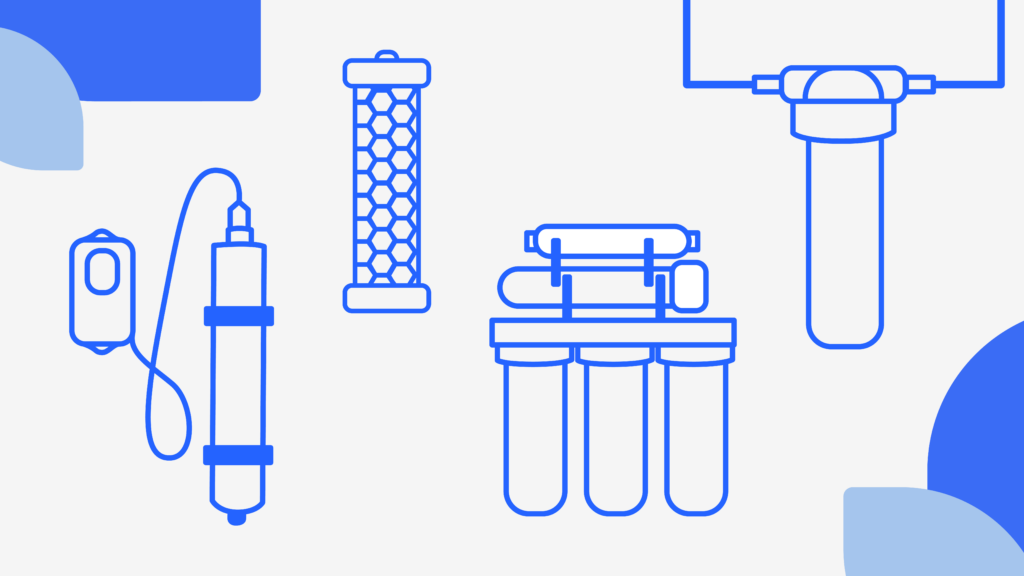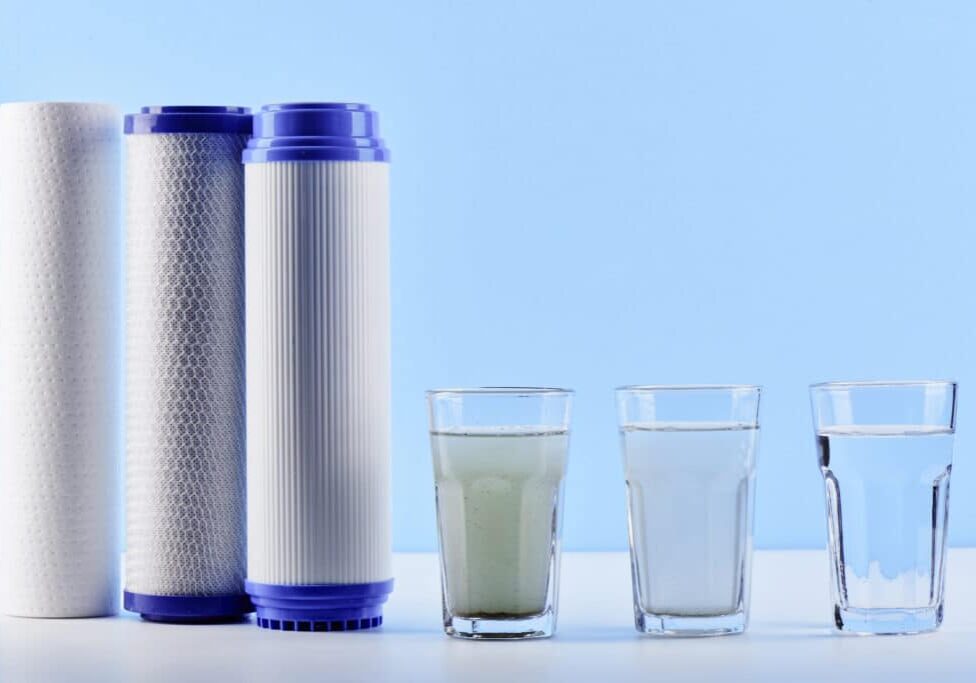January 30, 2025. Clean, safe drinking water is something many of us take for granted. The reality is that the definition of “safe” water is a moving target, one that regulatory agencies have been slow to recalibrate—even as science presents compelling evidence of harmful contaminants in our water supply and the need for adequate water filtration.
Whether you’re filling up from the tap, using a pitcher filter, or cracking the seal on a bottle, the truth is that the type of filter your water passes through is the single greatest determinant of nutritional quality, safety, and taste.
This blog explores the complexities of water filtration, debunks common misconceptions “safe” versus “unsafe” drinking water, and highlights what makes a truly superior filtration system. With insights from global water quality initiatives and practical advice for consumers, Bevi is here to help you make more informed choices about your water.
What defines “safe” drinking water?
The concept of “safe” drinking water is more complex than you’d think.
According to the United Nations Environment Programme, water is considered safe when it is free from pathogens, toxic chemicals, and physical contaminants (like sediment). However, even in the United States, where municipal systems are well-regulated, regulatory agencies lag behind scientific discoveries about the long-term risks posed by pollutants. Given that 9 out of 10 Americans rely on municipal water systems for their drinking water, this gap between knowledge and regulation leaves millions vulnerable to toxins that may be present in their water for years before action is taken.
How regulatory lapses let “forever chemicals” linger
A prime example of this regulatory delay is the story of PFAS, or per- and polyfluoroalkyl substances. These synthetic chemicals, used in products from nonstick cookware to firefighting foam, were flagged as hazardous as early as the 1950s. Scientists warned of their persistence in the environment and potential harm to human health, yet it took until 2024 for the EPA to establish enforceable limits on PFAS in drinking water. Known as “forever chemicals” for their extreme resistance to breaking down, PFAS accumulate in ecosystems and bodies over time, increasing the risk of cancer, hormone disruption, and other serious health issues.
Why the decades-long delay in setting standards?
It wasn’t due to a lack of evidence. In fact, the companies that manufactured PFAS were aware of their risks and actively concealed this information from the public. But beyond corporate cover-ups, there’s a larger issue at play: the sluggish pace of regulatory systems. Agencies like the EPA are slow to respond to new contaminants, hindered by outdated infrastructure and bureaucratic inertia.
When public water fails: How infrastructure gaps leave millions vulnerable
Meanwhile, municipal water systems face their own challenges. Filtration failures, aging pipes, and underfunded infrastructure can result in sporadic but significant contamination events. According to the Scientific American, drinking water violations have surged over the past four decades, with millions of Americans exposed to conditions that fall below safety standards. These issues often hit underserved communities the hardest. For Black, Hispanic, and low-income neighborhoods, concerns over tainted water are magnified by historical neglect and fewer resources to address ongoing problems.
It’s essential to recognize that the issue isn’t occasional breakdowns in water systems—these happen and are largely unavoidable. The real problem is the systemic failure to address known risks in a timely manner. When contaminants like lead or arsenic remain in water supplies for years after their dangers are well-established, it’s a stark reminder that regulation hasn’t kept pace with reality. For those without point-of-use filtration systems, this can mean unknowingly consuming unsafe water day after day.
At Bevi, we believe that clean water shouldn’t be a gamble. Understanding the shortcomings of municipal water systems is the first step toward making informed choices about what you drink.

The science of water filtration: 4 major methods
Advanced filtration solutions can bridge the gap between outdated regulations and modern safety concerns, ensuring that the water you rely on is truly safe. Because when it comes to water, the status quo is no longer good enough.
Different filtration methods address specific contaminants and serve various purposes, from improving taste to eliminating harmful microorganisms. Below, we explore four primary filtration techniques to understand their capabilities, applications, and limitations.
1. Activated carbon filters: The economical way to filter water
Activated carbon filtration is one of the most trusted and widely adopted water filtration methods due to its versatility and cost-effectiveness. It works by using highly porous carbon material to adsorb impurities from water.
Key capabilities
- Activated carbon excels at removing chlorine, which is commonly added to municipal water systems but can leave an unpleasant taste and odor.
- This method is also effective against volatile organic compounds (VOCs), pesticides, herbicides, and some heavy metals such as lead and mercury.
- By trapping microscopic particles, carbon filters enhance the overall taste and clarity of water, making them a staple for beverage preparation.
Applications
- Frequently used in household water pitchers, under-sink systems, and commercial beverage dispensers.
- Ideal for improving the taste and smell of water, especially in areas with high chlorine levels.
Challenges
- While excellent at improving taste and removing chemical contaminants, activated carbon is slightly less effective against dissolved solids, bacteria, and viruses than other filtration methods (such as the resource-intensive reverse osmosis).
- Filters must be replaced regularly, as saturated carbon can become a breeding ground for bacteria or begin to release trapped impurities back into the water.
Activated carbon is often considered the gold standard for filtering water. It effectively removes a wide range of contaminants—especially those that make water taste or smell poorly—while being economical to service.
2. Reverse Osmosis (RO): Water filtration with an environmental price
Reverse osmosis is one of the most advanced water purification methods, utilizing a semipermeable membrane to remove a wide array of contaminants. It forces water through the membrane under pressure, leaving impurities behind.
Key capabilities
- RO systems remove up to 95-99% of dissolved solids, including salts, nitrates, and fluoride.
- They are highly effective against heavy metals such as arsenic, lead, and chromium, as well as microorganisms like bacteria and viruses.
- RO provides water of exceptional purity, often surpassing bottled water standards.
Applications
- Ideal for households with high levels of dissolved solids or specific contaminants like arsenic and fluoride.
- Widely used in laboratories, medical facilities, and industries requiring ultrapure water for manufacturing processes.
Challenges
- Water Waste: RO systems can waste significant amounts of water during the filtration process, with some systems discarding up to 4 gallons for every gallon of purified water.
- Mineral Removal: In removing impurities, RO also strips water of beneficial minerals like calcium and magnesium, which may affect taste and nutrition.
- Cost and Maintenance: RO systems are typically more expensive upfront and require regular maintenance, including filter and membrane replacement.
Reverse osmosis is highly effective for achieving a high degree of water purity, especially in environments with severe contamination concerns. The significant waste water produced in the process of reverse osmosis, however, is far less friendly when compared to other forms of filtration. Every gallon filtered with RO is four gallons lost.
3. Ultraviolet (UV) Purification: Harnessing light for water filtration
Ultraviolet purification uses high-frequency UV light to disinfect water by targeting harmful microorganisms. Unlike other methods, UV filtration focuses on sterilization rather than removing physical or chemical contaminants.
Key capabilities
- UV purification eliminates 99.99% of bacteria, viruses, and protozoa, making it one of the most effective methods for disinfection.
- It is particularly effective against pathogens such as E. coli, salmonella, and Giardia.
- Since UV does not involve chemicals, it preserves the natural taste and composition of water.
Applications
- Commonly used in combination with other filtration methods to ensure water is free from harmful microorganisms.
- Ideal for rural or remote areas with concerns about microbial contamination, as well as in hospitals and industries where sterile water is essential.
Challenges
- No Removal of Physical Contaminants: UV systems do not address sediments, heavy metals, or chemical contaminants; they must be paired with pre-filtration systems like activated carbon or RO.
- Dependence on Power: UV systems require a reliable power source, which may limit their use in off-grid or emergency settings.
- Water Clarity Requirement: Turbid or cloudy water can block UV light, reducing its effectiveness. Pre-filtration is often necessary.
UV purification shines as a final step in a comprehensive water filtration system, ensuring the safety of water from microbial threats.
4. Sediment Filtration: A practical pre-filter solution
Sediment filtration is a straightforward method designed to remove larger particles from water, such as sand, silt, rust, and debris. While less sophisticated than other methods, it serves as a crucial preliminary step in water purification.
Key capabilities
- Particle Removal: Captures visible particles, protecting downstream filtration systems from clogging or damage.
- System Longevity: Enhances the performance and lifespan of secondary filtration methods, like activated carbon and RO, by reducing their workload.
Applications
- Commonly installed as a pre-filter in household or industrial systems, particularly in areas with high sediment levels.
- Used in combination with other purification technologies for a comprehensive filtration approach.
Challenges
- Limited Filtration Scope: Ineffective at removing chemical contaminants, dissolved solids, or microorganisms.
- Maintenance Requirements: Filters require regular cleaning or replacement to maintain efficiency.
While not a standalone solution, sediment filtration is an essential component for water systems dealing with visible particulate contamination, offering foundational protection for more advanced filtration technologies.
Choosing the right water filtration method
Each of the four filtration technologies described above offers unique advantages, and often, the best solution is a combination of methods. For instance, pairing activated carbon and UV purification addresses both chemical and microbial contaminants, while adding RO ensures the removal of dissolved solids.
Beyond water’s safety, filtration plays a pivotal role in crafting quality beverages. Minerals, pH levels, and residual chlorine all influence the flavor profile of your drink. For sparkling water enthusiasts, consistent carbonation requires water free from impurities that could disrupt its texture or taste. High-quality beverage filtration systems ensure every sip meets premium standards, whether it’s plain water, cold brew tea, or vitamin-enhanced hydration.
By understanding the capabilities and limitations of these systems, consumers can make informed decisions to ensure safe, clean, and great-tasting water for every application.
Maintenance matters: When filters fail
Even the best beverage filtration systems can falter without proper upkeep.
Overused filters can become breeding grounds for bacteria or start releasing trapped contaminants back into the water. Regular replacement is essential, especially after seasonal events like municipal system flushes, which can introduce sediment and impurities.
Why carbon filters for water stand out
When it comes to standalone filtration methods, carbon filters consistently prove to be a highly effective and versatile option. They excel at improving water quality, taste, and safety by removing a wide array of contaminants, including chlorine, volatile organic compounds (VOCs), pesticides, and even microplastics. Carbon filters are not only cost-effective but also environmentally friendly, reducing reliance on bottled water and the waste associated with single-use plastics.
Bevi machines, for instance, use advanced carbon filtration systems, such as the 3M HF20i filter, which enhances water quality to a remarkable degree. These filters operate at a 0.2-micron precision, effectively trapping bacteria, microorganisms, and microscopic particles that can impact water safety and flavor. Unlike many filtration systems that compromise convenience, carbon filters like these have a long lifespan—doubling their efficiency compared to standard filters—requiring fewer replacements and offering a lower cost per gallon over time.
Moreover, carbon filtration preserves beneficial minerals in water, delivering a clean and refreshing taste without stripping the water of essential nutrients. Paired with their minimal maintenance and user-friendly design, carbon filters represent the ideal balance of performance and practicality. For workplaces or homes prioritizing sustainability, these filters are a clear choice, offering a reliable, eco-friendly alternative to bottled water while meeting stringent safety and taste standards.
Hydrate better with Bevi
In an age where water quality is a growing concern, the right filtration system can make all the difference. From ensuring safety and taste to reducing environmental impact, choosing a high-performing carbon water filtration system is a step toward healthier, more sustainable hydration.
>> Learn more about the advanced water filtration system in a Bevi water cooler.



